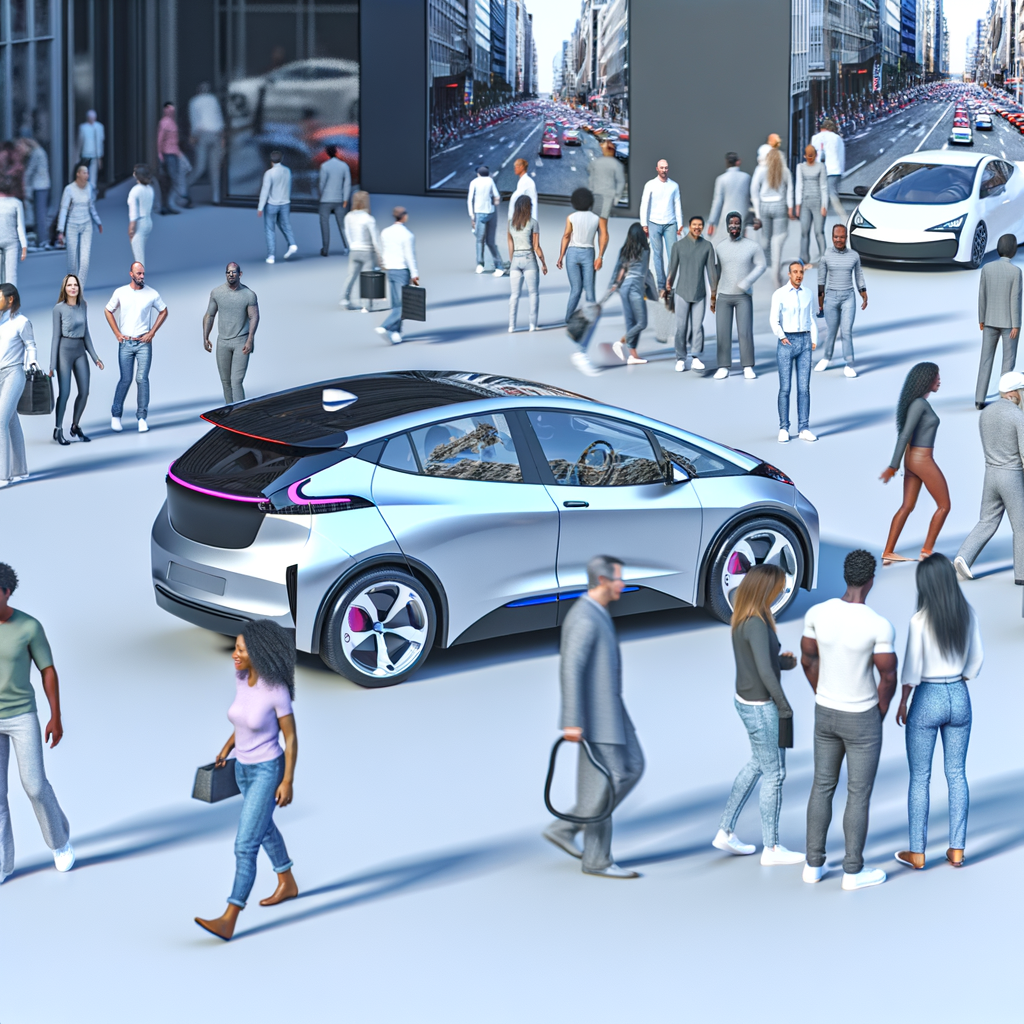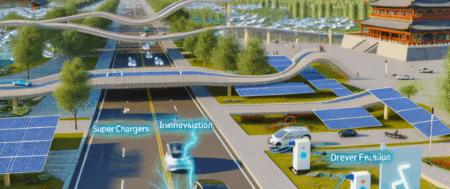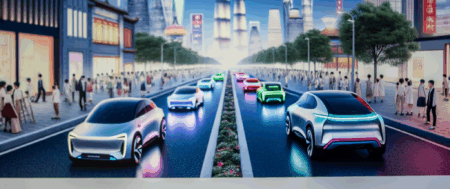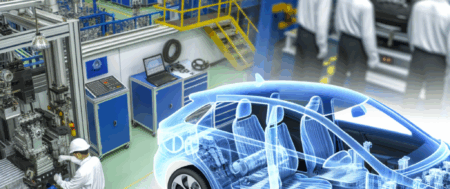In the rapidly growing economy of China, the world’s largest automotive market, top foreign automakers are joining forces with domestic car brands through strategic partnerships and joint ventures. This collaboration is critical for navigating the complex regulatory landscape and tapping into the booming demand for Electric Vehicles (EVs) and New Energy Vehicles (NEVs), fueled by urbanization, environmental concerns, and government incentives. These alliances leverage technological advancements and a deep understanding of consumer preferences to meet the unique challenges and intense market competition in China. By adapting to the local demands for innovation and sustainability, foreign and domestic players alike are setting the stage for a transformative future in mobility within this key market.
In the fast-paced lanes of global commerce, the China automotive market stands as the largest automotive market in the world, a testament to its unparalleled scale in production and sales. This colossal market, propelled by a growing economy, rapid urbanization, and an expanding middle class, has positioned China as an indispensable player on the international automotive chessboard. With a market ripe with opportunities, foreign automakers and domestic car brands alike are vying for the attention of Chinese consumers, whose preferences are increasingly tilting towards Electric Vehicles (EVs) and New Energy Vehicles (NEVs). This shift is largely fueled by environmental concerns and attractive government incentives, highlighting the country’s commitment to green and sustainable mobility solutions.
As foreign automakers seek to tap into this lucrative market, strategic partnerships through joint ventures with local Chinese companies have become a navigational compass to steer through China’s complex regulatory landscape and to secure a foothold in the vast consumer base. These collaborations are not just a market entry strategy but a fusion of international expertise and local market insights, creating a synergy essential for thriving in the competitive dynamics of China’s automotive sector.
This article delves into the intricacies of the China automotive market, exploring how top foreign automakers are crafting strategic partnerships to compete in the world’s largest automotive market. From the electric dreams driving the surge of EVs and NEVs in China’s urban landscape to the fusion of forces through joint ventures and the regulatory landscape shaping the industry’s future, we unpack the factors driving consumer preferences and market competition. Additionally, we will explore how technological advancements and government incentives are accelerating innovation, setting the stage for a future where China not only leads in automotive production and sales but also in the global push towards an automotive industry that is more sustainable, innovative, and consumer-focused. Join us as we navigate the terrain of the China automotive market, a journey into the heart of the world’s automotive future.
1. “Navigating the Terrain: How Top Foreign Automakers Forge Strategic Partnerships in the World’s Largest Automotive Market”

In the heart of the world’s largest automotive market, top foreign automakers are engaging in a strategic ballet, forging alliances with domestic car brands to tap into China’s growing economy, urbanization boom, and the burgeoning demand for Electric Vehicles (EVs) and New Energy Vehicles (NEVs). The allure of the Chinese market is undeniable; it’s a landscape brimming with opportunity, driven by consumer preferences that increasingly lean towards sustainability and innovation, thanks in part to significant government incentives aimed at reducing environmental concerns.
Navigating the complex regulatory landscape of China requires a nuanced approach. Foreign automakers have found success through joint ventures with local companies, a strategic partnership model that allows them to share the burden of compliance while benefiting from the extensive knowledge and network of their Chinese counterparts. These collaborations are essential in a market that values both technological advancements and deep cultural understanding.
The shift towards EVs and NEVs is particularly notable. With the Chinese government implementing policies to encourage the adoption of greener vehicles, there’s a clear push towards electrification. This has spurred a race among automakers to deliver vehicles that not only meet this demand but do so in a way that resonates with local consumer preferences. Technological advancements play a key role here, as companies invest in research and development to create vehicles that offer longer range, faster charging times, and innovative features that appeal to the tech-savvy Chinese consumer.
Market competition in China is fierce, with both domestic and foreign brands vying for a piece of the pie. Strategic partnerships between foreign automakers and Chinese companies are not just about navigating regulatory hurdles; they’re also about leveraging each other’s strengths to stand out in a crowded market. For foreign brands, this means accessing extensive local manufacturing networks, distribution channels, and marketing insights. For Chinese companies, it involves tapping into the global expertise and technological prowess of their international partners.
Understanding the Chinese automotive market’s dynamics is crucial for any foreign automaker looking to make its mark. Success in China goes beyond just offering high-quality vehicles; it’s about how well a company can adapt to the unique demands of the market. From embracing the shift towards electric mobility to understanding the nuances of consumer behavior and staying ahead of technological trends, the ability to navigate this complex terrain through strategic partnerships is what sets the top players apart.
As the Chinese automotive market continues to evolve, driven by a growing economy, urbanization, and environmental concerns, the strategic alliances formed between foreign and domestic car brands will play a pivotal role in shaping the future of mobility in China. These partnerships, built on a foundation of mutual benefit and respect, are key to unlocking the vast potential of the world’s largest automotive market.
In summary, the China automotive market, standing as the world’s largest in both production and sales, represents a complex yet rewarding landscape for both domestic car brands and foreign automakers. The fusion of a growing economy, rapid urbanization, and an expanding middle class has catapulted China to the forefront of the global automotive industry, with a marked emphasis on electric vehicles (EVs) and new energy vehicles (NEVs). This shift, largely driven by environmental concerns and government incentives, underscores the market’s pivot towards sustainability and innovation.
Foreign auto manufacturers, in their quest to tap into this lucrative market, often find themselves navigating a multifaceted regulatory landscape, necessitating the formation of joint ventures with local Chinese companies. These strategic partnerships are not just a means to access the vast consumer base but also a way to align with the country’s market competition, consumer preferences, and technological advancements.
Furthermore, the Chinese government plays a pivotal role in shaping the automotive industry’s direction through policies and incentives that encourage the adoption of greener vehicles. This, coupled with the market’s openness to technological advancements, has set the stage for a vibrant competition where success hinges on understanding and adapting to the local market dynamics.
As the China automotive market continues to evolve, it remains at the epicenter of the automotive world’s attention, driven by its sheer size, potential for growth, and its significant impact on global economic trends. For foreign automakers and domestic players alike, the key to success lies in harnessing the power of strategic partnerships, staying abreast of technological advancements, and aligning with the ever-changing consumer preferences and government directives. The road ahead, filled with both challenges and opportunities, promises to be an exciting journey for all stakeholders in the world’s largest automotive market.






